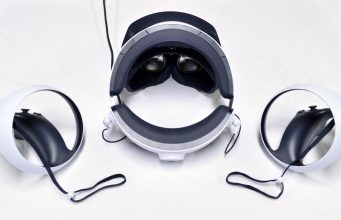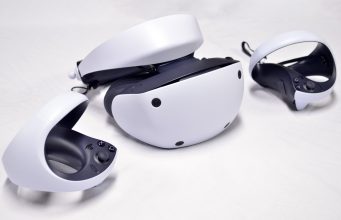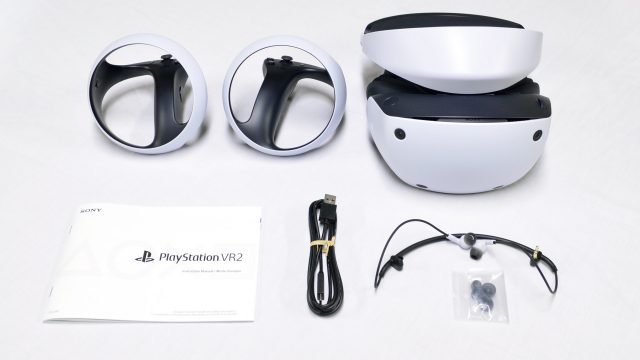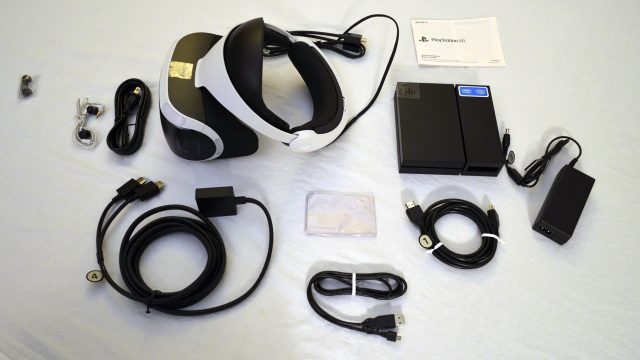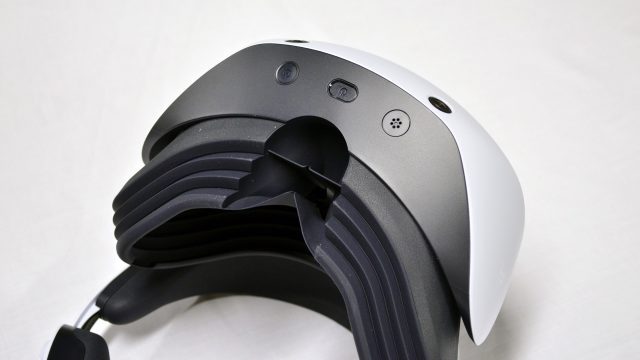PSVR 2 Review – Sony Takes Several Steps Forward for Consumer VR
More than six years after its VR debut, Sony is ready to bring next-gen VR to PS5 with PSVR 2. Does PlayStation VR 2 make a substantial improvement over its predecessor? And how does it stack up to other VR headsets on the market? Read on to find out.
With PSVR 2, Sony is not just improving on the prior headset, it’s also raising some bars for consumer headsets overall as the first device in its class to bring eye-tracking, HDR, and new haptic capabilities to the market. Let’s start out with a look at PSVR 2’s specs and how they compare to the original PSVR:
PSVR 2 vs. PSVR Specs |
||
| PSVR 2 | PSVR | |
| Resolution | 2,000 x 2,040 (4.1MP) per-eye, OLED, HDR | 960 x 1,080 (1.0MP) per-eye, RGB OLED |
| Refresh Rate | 90Hz, 120Hz | 90Hz, 120Hz |
| Lenses | Fresnel | Single element non-Fresnel |
| Field-of-view (claimed) | 110° (diagonal presumed) | 100° (diagonal presumed) |
| Optical Adjustments | IPD, eye-relief | Eye-relief |
| Connectors | USB-C (no breakout box) | USB, HDMI (breakout box) |
| Cable Length | 4.5m | 4.4m |
| Tracking | Inside-out (no external beacons) | Outside-in (external camera) |
| On-board cameras | 4x IR (external), 2x IR (internal) | None |
| Pass-through View | Yes | No |
| Input | PSVR 2 Sense controllers (rechargable), DualShock 5 (rechargable) eye-tracking | DualShock 4 (rechargeable), PS Move (rechargeable), PS Aim (rechargeable), voice |
| Audio | 3.5mm aux output | 3.5mm aux output |
| Microphone | Yes | Yes |
| Haptics | Controllers, headset | Controllers |
| Weight | 560g | 600g |
| Release Date | February 22nd, 2023 | October 13th, 2016 |
| Console Compatibility | PS5 | PS4, PS4 Pro, PS5 (with adapter, only PS4 compatible VR games) |
PSVR 2 Review
One of the most important parts of a VR headset is how things look when you peer through the lenses, so that’s where we’re going to start.
Clarity
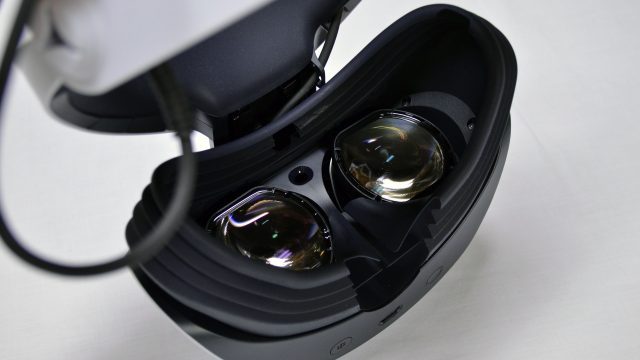
How good things look inside of a VR headset depends on much more than just resolution, so we like to boil things down to the point of talking about ‘clarity’, ie: how clear does the virtual world look inside the headset.
PSVR 2 gets a big jump in clarity over its predecessor thanks first and foremost to a big leap in resolution (from 1.0MP per-eye to 4.1MP per-eye). From a resolution standpoint, that puts PSVR 2 on par with other headsets on the market like Quest 2.
While the image through PSVR 2’s lenses certainly looks much better than the original PSVR, it’s hampered a bit by two notable issues: sweet spot and motion blur.
PSVR 2’s Fresnel lenses actually have fairly good edge-to-edge clarity, but only if you can get your eyes in the headset’s rather small eye-box (AKA sweet spot). Unfortunately not everyone will be able to get their eyes into the ideal position because the sweet spot seems to be designed at a distance that makes it so you’d have to cram the headset uncomfortably against your face in order to keep the lenses in the perfect spot. Thanks to an eye-relief adjustment it’s easy to move the lenses far enough away that they aren’t crushing your nose, but for every little bit that you do you give up some sharpness on the edges and some field-of-view.
The small eye-box also means that if you don’t dial the headsets ergonomic adjustments in just right you’ll see things like chromatic aberration and more blur around the edges than you would otherwise.
Thankfully Sony has included a guided calibration step (which makes use of the headset’s eye-tracking) and helps users find that ideal spot by guiding them toward the correct IPD and lens alignment. This definitely helps reduce the issue of having a small sweet spot, and I find myself running calibration every few times that I pick up the headset just to be sure things haven’t jostled out of place. Luckily Sony has made it easy to run the calibration step at any point—even in the middle of a game.
I also mentioned motion blur as something that’s holding back the clarity on PSVR 2. I still don’t know exactly why I’m seeing a fair bit of motion blur on PSVR 2—whether its persistence blur, ghosting, reprojection, or something else—but it somwhat reduces the sharpness of the image whenever your head is in motion (which in VR is most of the time). It’s a shame because you can see just how sharp everything is when you head is still, and then as soon as you go to look at something else, the world around you becomes a bit more blurry.
And unfortunately PSVR 2’s Fresnel lenses aren’t an exception to the rule: its still easy to spot god rays and some glare in high contrast scenes.
Displays & HDR
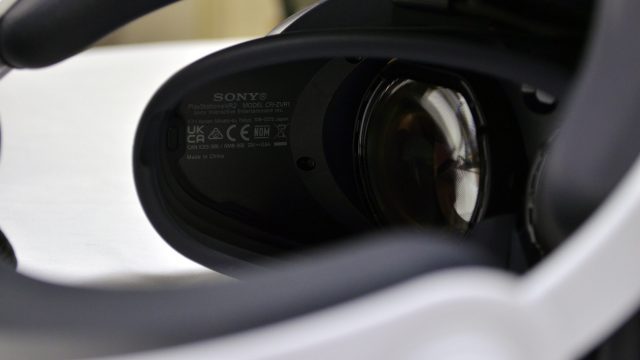
Sweet spot issues aside, PSVR 2 is packing a pair of impressive OLED displays that make colors feel more rich and saturated while allowing dark parts of the scene to get truly dark instead of just dark grey.
This makes a big difference when it comes to content like Horizon Call of the Mountain which aims to immerse players in a world full of lush scenery.
While it’s great to have OLED black levels on a modern headset, PSVR 2’s displays do suffer from more mura than seen on its contemporaries, which manifests as a bit of speckling on the screen that’s more visible when seen against certain colors.
But that’s the price you pay for those deep blacks and purported ‘HDR’ capabilities, though I’ve yet to hear Sony confirm key parts of that capability, like peak brightness.
In my experience with the headset I can’t say I’ve felt like its showing significantly more peak brightness than other headsets, but it feels like the HDR is paying off more in the mid and lower tones.
Field-of-view
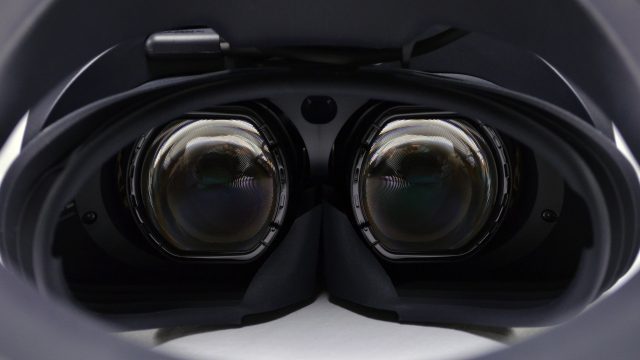
Similar to the small sweet spot, PSVR 2’s field-of-view is technically quite large—at times feeling like it meets even Valve’s Index—but that’s only if you can push the lenses exceptionally (and for me, uncomfortably) close to your eyes; so close that the lenses are putting a lot of pressure on your nose. Between where it’s actually comfortable for me to have the lenses sit and where I would get the maximum field-of-view, it feels like I’m leaving a non-trivial amount of FoV on the table. That said, even the comfortable position leaves me with a fairly sizable field-of-view that exceeds something like Quest 2.
IPD & Eye-tracking
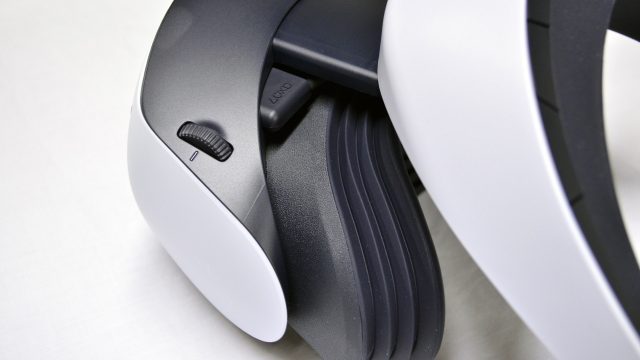
PSVR 2 is the first consumer VR headset to ship with eye-tracking. While this has the potential to be very useful across a range of applications, I’ve yet to see any game that’s putting it to seriously good use. So far the closest any game has come is Horizon Call of the Mountain which uses eye-tracking to improve the accuracy of the game’s subtle auto-aim.
For its part, Sony is making use of the eye-tracking to help users set their correct IPD (which is very useful, especially considering the headset’s small sweet spot), and even adjust the tilt of the headset on the user’s head.
While I appreciate that smart touch, I wish the calibration step would actually provide a number to accompany the IPD setting; that way you could simply remember your number and dial it in every time. Instead, the guided calibration just shows a visual indicator of how close your eyes are to the center of the lenses. It works well, but without a number to go by you need to dial things in visually every time.
Continue on Page 2: Audio, Tracking & Controllers, Haptics »
PSVR 2 Review – Sony Takes Several Steps Forward for Consumer VR Read More »
